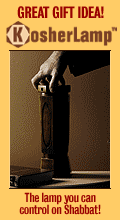
| ||||
Care & Maintenance Ideas for Friendlier Electronic Equipment - Part IVBy: F. J. STIFTER
Finally - Some Solutions ! ! Efforts to combat damaging, disruptive spike, surge and interference threat should address data lines, network cables, phone- modem lines and AC power lines individually. We'll address AC Power in this segment. AC Power considerations Wire in Filter Suppressors In many cases, high performance wire in AC power Line Filter/Suppressor can be installed in the electronic equipment junction box or mounted directly within sensitive equipment. A typical wire in unit is shown in Figure 1. Generally wire in units are available with ratings up to 30 Amp load capacity. Models designed for 125/250 Volts, 250 Volts and 3 Phase Voltage ratings are manufactured. The power line filter attenuates electrical, RFI and noise interference, while the integral suppressor absorbs high voltage spikes, transients and surges. Models are available with wire leads, push on tabs, screw or solder terminals.
Several companies offer distinct filter grades to combat various interference
conditions & problems. Electronic Specialists offer Commercial, Industrial and
Laboratory grades suitable for most industrial situations likely to be
encountered.
Line Cord filter suppressors Stand alone controllers, computers or other apparatus can readily be protected by line cord type protective systems. Figure 2 shows an Industrial grade line cord unit. This model is typical of the over 50 line cord models which are manufactured by Electronic Specialists. Additional models are available for Direct Plug wall socket connection, 250 Volt operation and 3 Phase electrical systems. |
||||
Again, quality manufacturers offer choices of several grades and models to permit adapting to industrial situations as encountered. Twist type industrial electrical connector systems can be protected with Twist Protect models similar to the unit illustrated in Figure 3. Standard NEMA Twist Type socket designations for voltage, phase and current can be accommodated.
High performance protection designs have contributed to longer equipment life
and improved system performance for thousands of computer, audio, industrial and
scientific installations throughout the world
Isolators and Power Line Interaction I Know This is Hard to believe - But
Some systems suffer from AC Power Line interaction. This is particularly true
for systems employing sensitive test and measuring equipment together with high
power controllers or heavy duty units under test. A typical line cord model
Isolator is shown in Figure 4. Reports have indicated a remarkable "settling
down" of here-to-fore erratic test set-ups.
Significant performance improvement, in those systems suffering from equipment
interaction, can be achieved using line cord or wire in filter Isolators.
Isolators incorporate filter isolated channels coupled with high performance
suppression; a particularly effective combination which isolates protected
equipment from power line pollution in addition to providing isolation between
interacting components. Not needed for every installation, these AC Power Line
filter Isolators have rendered many erratic systems blissfully stable.
Other AC Power Devices
This tutorial segment has introduced several devices widely used to convert
unfriendly industrial or commercial electronic systems into the very model of
docility.
AC Power Specifications to Consider First - Suppressors
Most folks refer to any AC Power protector as a "suppressor". That's the reason
many people question why they should pay $25, or $50 or even $100 for a real
suppressor since their dealer "threw in" a perfectly good $7.50 suppressor when
they purchased their equipment.
A great majority of suppressors on the market today employ MOV technology - some
in a hybrid version with other type suppression devices. Some units use only one
MOV; Others use an array of 10 (or more) suppressing devices.
A slight improvement, but...
Once you get past the bottom-feeding single MOV suppressors, you encounter 3 MOV
devices. These are usually 6,500 surge amp MOVs, but I've seen 4,500 surge amp
units used. These suppressors may give up to 3X more protection than a single
MOV device, but that's still a very slim safety reed to lean on. I've seen
vaporized MOV's in these, with power still being delivered to the sockets.
Connected equipment was still unprotected!
And the good stuff ....
Quality suppressors generally provide a minimum 39,000 Surge Amp capability,
ranging upwards to 60,000 Surge Amps.
What about hybrid configurations?
Hybrid suppressor technology refers to the practice of employing 2 or more
device types in an arrangement designed to augment equipment protection.
Gas tubes..
Gas tubes respond to surges and spikes in 1 or 2 microseconds, about the same as
MOV devices. Additionally they will pass more surge current than MOVs, leading
to impressive (but suspect) Surge Current and Surge Watt numbers.
Suppressor diodes ..
Suppressor diodes respond to surges and spikes within 1 - 10 pico-seconds; over
1,000 x faster than either gas tubes or MOVs. They are ideal for suppressing
sub-nanosecond spikes generated by thyrister controlled devices which now exist
in every facet of our life. Sub-nanosecond spikes show up, do their damage, and
are gone before the MOV even begins suppressing activity. Very high short term
current and extremely fast response make suppressor diodes a natural for
eliminating damage and disruptive threats from sub-nanosecond spikes
To Sum up Suppressor specifications ...
Surge Amp ratings are the critical rating to check. Look for a minimum 39,000
Surge Amp rating. Units with less capability generally provide no surge amp
information.
Filter Networks
Interference can get onto your power lines either via conduction or radiation.
What to look for
Some low cost, single MOV suppressors claim to have "filtering". Usually this is
a cheap capacitor. A few low end units claim the inherent MOV capacity provides
filtering!
Costs
Avoid "cheapies" like the plague! Mostly, these offer a false sense of security.
If the sales person offers you one "free" when buying a new system - ask for the
money.
Next Time Our next tutorial installment will discuss - Modems, Fax and Phone Line connected equipment <<< Back To Part 3 To Part 5 >>>
|






